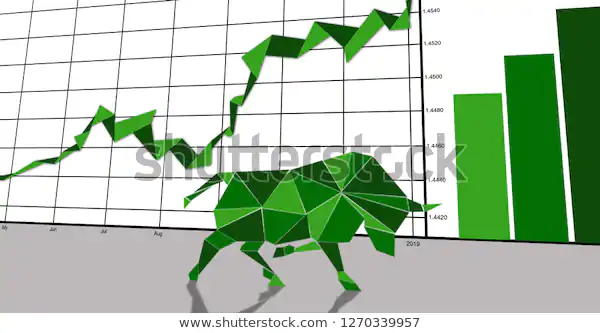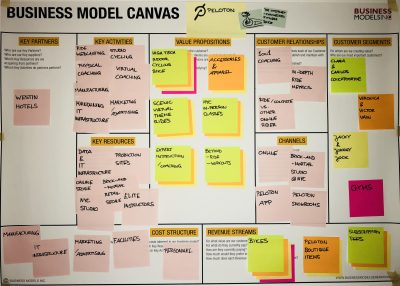Falling Wedge Chart Pattern Trading Advantages for Wedge Patterns
Contents:


The take profit target is measured by taking the height of the back of the wedge and by extending that distance up from the trend line breakout. The profit target is measured by taking the height of the back of the wedge and by extending that distance up from the trend line breakout. In a downtrend, the falling wedge is known as a reversal pattern. But as seen in past any breakout is followed by a few days retacement. On 21 June 22 the stock broke out from 52 week low and then retraced from 200 for 2-3 sessions.
We can easily see the formation of Falling Wedge on 4hours and 3 hours Time Frame. EURUSD has touched its First support and lets hope it respects and repels it from here. This can signify two things – the continuation of the existing trend and reversal of the trend. There are many online screeners present which can screen stocks on the basis of any defined criteria. Some broking platforms also provide this facility of screening stocks.
Restored Falling Wedge Pattern Sees Bitcoin Rising above $11,500 – NewsBTC
Restored Falling Wedge Pattern Sees Bitcoin Rising above $11,500.
Posted: Wed, 07 Oct 2020 10:03:10 GMT [source]
Traders should keep a watch on the nearest resistance level, which is around Rs 395. The nearest low of INR 343 can be looked upon for the support level. As a possibility of a retracement/correction always persists amid a breakout, as long as this support level is intact, dips could be used as a long opportunity. A support trend line connects all the low points of an asset’s price graph, whereas a resistance trend line connects its high points. The entry, Take profit, exit, and stop loss targets are clearly defined, offering an excellent risk-reward ratio.
Start Investing in 5 mins*
This stock breaks out from the falling wedge pattern and jumps 6 per cent with higher volumes-Your browser does not support the audio element. This pattern is more like a triangle with a minor difference. While in a triangle pattern, both the trendlines are never in the same direction, in the case of a wedge, it is always the case. In a falling wedge, both upper and lower trendlines are facing toward the south and a breakout above the upper trendline is a good sign of an impending upside. This pattern can be used in any time frame, although it is more commonly seen on longer-term charts. Rising wedges typically form during bullish periods as investors buy the asset in anticipation of further price increases.
Bitcoin, Ethereum and XRP Price Prediction: On the Verge of Collapse – BeInCrypto
Bitcoin, Ethereum and XRP Price Prediction: On the Verge of Collapse.
Posted: Tue, 18 Oct 2022 07:00:00 GMT [source]
The trend lines converging the support and resistance level in a wedge pattern slope in the same direction, however, they may differ in magnitude. For a long period, the stock had been trending downward as supply had surpassed demand. As bears gained control, the share price continued to make lower lows and lower highs, displaying a steady drop that was bordered by two falling trendlines. Profit booking occurred every time the stock attempted to break through the upper trendline resistance, while a tide of buyers arrived at the lower trendline support. For a long time, the stock had been following a southward direction as supply was overpowering the demand. As bears had an upper hand, the share price kept on making lower lows and lower highs and portrayed a consistent decline that was bounded between two falling trendlines.
How to use the Falling Wedge Pattern for Profitable Trading.
Rising wedge occurs when the price of the stock is rising over a time whereas falling wedge occurs when the price of the stock is falling over a time. This pattern can be drawn by using trend lines and connecting the peaks and the troughs. Once there is price breakout, there is a sharp movement of prices in either of the directions. A wedge pattern emerges when two lines connecting the successive highs and lows of a security during a trading period tend to converge. The occurrence of these kinds of patterns means that the price range of an asset is getting smaller. Wedge chart patterns signify price consolidation before a breakout.
- The research, personal finance and market tutorial sections are widely followed by students, academia, corporates and investors among others.
- An upward breakout is a bullish sign, whereas a downward breakout is bearish.
- Your stop loss should be placed on the opposite side of the breakout, and your Take profit should be placed where the wedge is thickest.
- Reover, the potential support for the digital asset can be found at the 200-MA zone, with a value of $22,022.
- When a security price keeps falling over time, a wedge is formed.
The downward breakout is one of the most reliable, creating big price downtrends. The reaction low occurs within 2 to 3 days after the price breaks out. This complete price action resulted in the construction of a falling wedge pattern, which resembles but is not the same as a triangle pattern. The main distinction is in the direction of both trendlines that contain the price action. A falling wedge formation has both of them facing down, although a triangle pattern never does.
Place Stop Loss:
Please be aware of the risk’s involved in trading & seek independent advice, if necessary. Your stop loss should be placed on the opposite side of the breakout, and your Take profit should be placed where the wedge is thickest. Target the depth of the “wedge” pattern from the trade entry level. Enter a “long” trade above the high of the trend line breakout bar. A target is set at the depth of the “wedge” pattern from the trade entry.
Similarly, a rising wedge that forms within a downtrend is considered bullish, while a rising wedge that forms within an uptrend is considered bearish. Prevent Unauthorized Transactions in your demat / trading account Update your Mobile Number/ email Id with your stock broker / Depository Participant. Essentially in wedge patterns, the breakout direction is predictable but it is difficult to know the breakout direction in the case of a triangle pattern. It is suggested to cover positions while trading with triangle charts as the breakout can occur in any direction. The falling wedge pattern is considered to be one of the most difficult charts to identify and take action from for technical analysts and traders. Traders using a falling wedge pattern should buy as soon as the prices break above the upper converging trend line with a stop loss at the bottom of the falling wedge.
The above figure reveals an example of a rising wedge chart pattern. Each trendline has at least three distinct minor excessive or minor low touches, sandwiched between two converging trendlines. The upward breakout from this rising wedge is uncommon because of its rarity. Rising wedges, particularly for downward breakouts, are a few of the worst performing chart patterns. According to Bulkowski ,rising wedges breakout below 69% of the time.
These parameters form the technical charts and analysts believe that history tends to repeat itself. Certain patterns formed in the past are most likely to result in similar results time and again. While technical analysis is beyond charting, it always considers price trends. Investor behaviours tend to repeat and hence recognizable and predictable price patterns are formed in a chart.
D-Street Bloodbath: Triggers That Dragged Market in Red, Nifty Below 18,100
The stock jumped over 6% to INR 369 in the morning trade and delivered a breakout from the Falling Wedge pattern on the daily chart. A falling wedge sample indicators a continuation or a reversal relying on the prevailing pattern. On the other hand, the target profit is calculated by extending the height of the wedge from the entry point of the trade on the chart.
Let’s talk about the falling wedge pattern or the bullish wedge pattern over here. Falling wedge patterns can form in any timeframe, from intraday to monthly charts. However, they are most commonly seen on daily or weekly charts. When interpreting this pattern, it is important to look at the overall price trend leading up to the formation of the pattern as well as the volume levels. A true falling wedge pattern should form in a downtrend and should see decreasing volume levels as the pattern forms.
- In order to form a rising wedge, both the support and resistance lines have to point upwards and the support line should be steeper than resistance.
- Each trendline has at least three distinct minor excessive or minor low touches, sandwiched between two converging trendlines.
- In the daily charts of Coal India Limited pasted below, this pattern can be seen after a downtrend.
- Wedge chart patterns signify price consolidation before a breakout.
- This means that you can look for potential buying opportunities.
- This pattern can be used in any time frame, although it is more commonly seen on longer-term charts.
However, the pattern can signify that the rally is losing steam and the price is about to head lower. Lines connecting the “higher-highs” and “lower lows.” A trend line breakout suggests a “long” trade. Trades are entered after a clear breakout from the trend line.
According to strategy 2, one should wait for the https://1investing.in/ to trade above the resistance. A trade should be initiated after the retest of the top trend line. Now, the broker resistance can be referred to as the support on the chart. Stop-loss should be fixed at the bottom price of the lower trend line. That much distance should be extended on the chart after the breakout of the top trend line.
Understanding the Falling Wedge Pattern
In this descending wedge pattern chart, it is clearly visible how a falling wedge pattern is being formed by the price movement of the currency pair. Both falling and rising wedges can be either bullish or bearish, depending on the direction of the trend. A falling wedge that forms within an uptrend is considered bearish, while a falling wedge that forms within a downtrend is considered bullish.
The falling wedge pattern is a bullish sample that begins broad on the top and continues to contract as costs fall. As with the rising wedges, trading falling wedge is likely one of the more challenging chart patterns to trade. A falling wedge pattern alerts a continuation or a reversal relying on the prevailing pattern. In terms of its appearance, the pattern is widest at the prime and becomes narrower because it moves downward, with tighter value action. As with rising wedges, the falling wedge may be one of the most troublesome chart patterns to precisely acknowledge and trade. Once the necessities are met, and there is a close above the resistance trendline, it alerts the merchants the look for a bullish entry point in the market.
It is a price pattern that is denoted by the intersection of trend lines on a price chart. The opposing trend lines are drawn to connect the respective highs and lows of a price activity progression over the stretch of 10 to 50 periods. The lines can exhibit the magnitude of the highs and lows, signifying whether they are ascending or descending; this pattern gives the appearance of a wedge, hence the name.

Look for the formation of a falling wedge pattern in the chart, where the price moves down in a converging manner, creating two downward-sloping trend lines. Because the answer may be in a simple chart pattern – the Falling Wedge. This powerful pattern has the potential to signal the end of a downward trend and the start of an upward trend, providing traders with profitable trading opportunities. From beginners to advanced traders, the Falling Wedge pattern is a must-know for anyone looking to increase their chances of success in the stock market. Today, Mahindra Lifespace Developers Ltd shares are showing tremendous power after breaking over the wedge pattern’s trendline resistance.
No worries for refund as the money remains in investor’s account. Investment/Trading in securities Market is subject to market risk, past performance is not a guarantee of future performance. The risk of loss in trading and investment in Securities markets including Equites and Derivatives can be substantial.
Day-traders wouldn’t exist if it wasn’t for charts, graphs, and patterns. Technical analysis is the key used by intraday traders and most short-term traders to analyze price movements. Technical analysis is a method to forecast the price directions by primarily studying historical prices and volumes. It is important to take into consideration the volume of trades in a descending wedge pattern, though the same is not true of a rising wedge.

In this article, you will know about a bullish chart pattern called the falling wedge pattern in detail. The falling wedge chart pattern formed when a market consolidates between two converging trend lines i.e. support and resistance lines. In order to form a descending wedge, both the support and resistance lines have to point downwards and the resistance line should be steeper than the line of support.


Responses